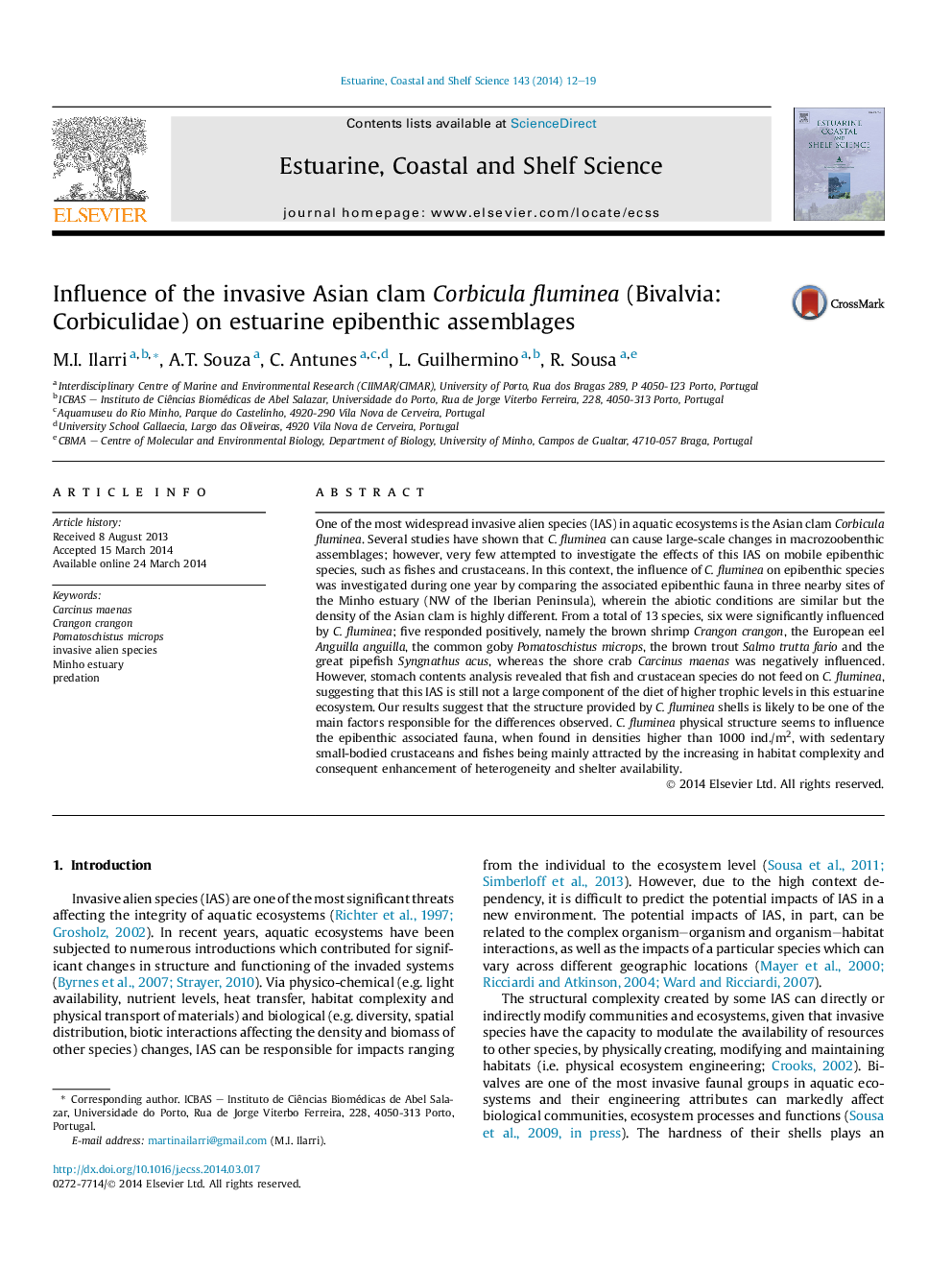| کد مقاله | کد نشریه | سال انتشار | مقاله انگلیسی | نسخه تمام متن |
|---|---|---|---|---|
| 4539690 | 1626653 | 2014 | 8 صفحه PDF | دانلود رایگان |

• Corbicula fluminea shells influence associated fauna by increasing habitat complexity.
• C. fluminea shells enhance shelter availability to sedentary small-bodied species.
• Six species (crustaceans and fishes) were significantly influenced by C. fluminea.
• Asian clam was not preyed by epibenthic species on the study area.
One of the most widespread invasive alien species (IAS) in aquatic ecosystems is the Asian clam Corbicula fluminea. Several studies have shown that C. fluminea can cause large-scale changes in macrozoobenthic assemblages; however, very few attempted to investigate the effects of this IAS on mobile epibenthic species, such as fishes and crustaceans. In this context, the influence of C. fluminea on epibenthic species was investigated during one year by comparing the associated epibenthic fauna in three nearby sites of the Minho estuary (NW of the Iberian Peninsula), wherein the abiotic conditions are similar but the density of the Asian clam is highly different. From a total of 13 species, six were significantly influenced by C. fluminea; five responded positively, namely the brown shrimp Crangon crangon, the European eel Anguilla anguilla, the common goby Pomatoschistus microps, the brown trout Salmo trutta fario and the great pipefish Syngnathus acus, whereas the shore crab Carcinus maenas was negatively influenced. However, stomach contents analysis revealed that fish and crustacean species do not feed on C. fluminea, suggesting that this IAS is still not a large component of the diet of higher trophic levels in this estuarine ecosystem. Our results suggest that the structure provided by C. fluminea shells is likely to be one of the main factors responsible for the differences observed. C. fluminea physical structure seems to influence the epibenthic associated fauna, when found in densities higher than 1000 ind./m2, with sedentary small-bodied crustaceans and fishes being mainly attracted by the increasing in habitat complexity and consequent enhancement of heterogeneity and shelter availability.
Journal: Estuarine, Coastal and Shelf Science - Volume 143, 20 April 2014, Pages 12–19